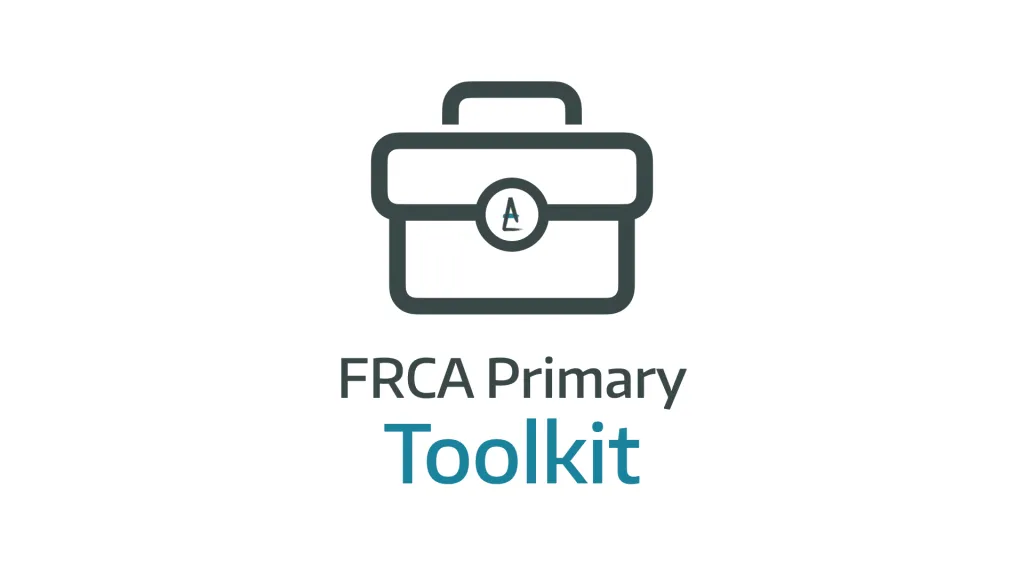Non-obstetric Surgery in Pregnancy

Take home messages
- 1-2% of women will require surgery unrelated to their pregnancy
- None of your routine anaesthetic drugs are teratogenic
- The mother's wellbeing remains the priority at all times
There's a patient in my patient
Just because you're pregnant doesn't mean your other organs magically stop having their own issues.
Understandably, many medical professionals feel rather uncomfortable looking after a patient that has another patient inside of them.
Likewise those maniacs that are comfortable looking after an intrapatient patient feel somewhat perturbed once the other organs start to get involved.
As a result, pregnant women presenting with medical or surgical issues unrelated to their pregnancy are at risk of not being looked after especially well, or in the wrong place, or both.
What are the common reasons to need non-obstetric surgery?
- Appendicitis
- Cholecystitis
- Trauma
- Malignancy
- Ovarian cyst torsion
- Cervical cerclage (sort of obstetric if you ask us but apparently it's on the list too)
Thankfully, however, when done properly, maternal outcomes after undergoing surgery unrelated to the pregnancy are pretty much the same as those in non-pregnant patients.
Rightly so, many clinicians worry that their attempts to treat the disease process will have an adverse impact on the unsuspecting foetus.
What are the potential problems for the foetus?
- Problems from the disease itself
- Hypoxia and placental hypoperfusion
- Triggering preterm delivery
- Neurodevelopmental adverse effects of medications
- Foetal demise
The most important concern is adequate perfusion and oxygenation (when is it not?).
This is best achieved by ensuring the mother is well perfused, and well oxygenated - shocker I know.
Discuss with the MDT
No surprises here, the answer is always 'MDT involvement' and for good reason. Someone from some other specialty will think of something clever or important that everyone else missed.
- Get the surgeons and obstetricians talking to each other
- Even if it's only minor surgery
- Ask about their antenatal care and previous obstetric history
- What medications they're on
- Any other issues they've had so far
"This lady has appendicitis, we're thinking of operating tomorrow morning, just wanted to run it by you?"
"Ah yes I saw her in clinic, she's had fifteen C-sections and her abdomen is one big adhesion now."
"Ah."
We're being deliberately facetious here to highlight the salient point that it's often helpful for the surgeon to be aware of the obstetric bits before they go diving in.
What are my priorities in theatre?
A bazillion years of evolution have primed mum to be perfectly suited to fixing baby's problems, so if you look after her, she'll look after the baby.
Your primary concerns depend on exactly how pregnant the woman is:
- Third trimester carries the same concerns and anaesthetic considerations as you would apply to a caesarean section under general anaesthetic
- First trimester concerns are less to do with the physiological impact of pregnancy on mum, and more to do with teratogenesis and neurodevelopment of the foetus
Trimester 1
- For the first 15 days, you can't cause teratogenicity, it's either a case of a the pregnancy being lost or continuing undeterred
- The foetus is most vulnerable between 15 and 60 days (9 weeks or so) when neurodevelopment is fastest and organogenesis is in full swing
- After this you can still cause functional problems, but not structural ones
- Elective surgery should be deferred where possible
- Regional anaesthesia should be used for emergency surgery where possible
- Do not delay emergency surgery, and prioritise mother at all times
- Hyperemesis may warrant an RSI and some electrolyte monitoring
A large study of 5000 Swedish women in 1989 found that neural tube defects and low birthweights were more common after non-obstetric surgery in the first trimester, but there was no increase in incidence of congenital abnormalities or miscarriages.
Avoid regular NSAIDS as potential risk of duct closure, but otherwise most of your drugs should be absolutely fine.
Nitrous is technically teratogenic in high doses in rats, and hasn't been shown to be harmful in humans, however you'd be hard pressed to justify why you used nitrous in a first trimester woman in this day and age.
Trimester 2
Generally speaking, if forced to operate during pregnancy then this is when you want to do it if at all possible, as the risks of both teratogenicity and preterm delivery are relatively minimised.
- There are still physiological changes to mother to be aware of
- You still want to minimise drug exposure of the foetus
- The uterus can still make the operation more tricky (depending on what it is for)
So keep your wits about you.
Trimester 3
- You're out of the teratogenicity risk window
- Avoid aortocaval compression from 20 weeks onwards (tilt the table)
- If delivery of the baby isn't imminent, then you can use opioids without worrying about neonatal respiratory depression
- Consider corticosteroids for the baby's benefit once viable
Most of your concerns are related to the physiological changes that occur later on in pregnancy, in particular the cardiovascular, respiratory and airway issues that make anaesthesia a smidge more challenging:
- Use a smaller tube as the airway becomes oedematous
- Use antacid prophylaxis
- RSI every time
- Reduced FRC means volatiles kick in quicker
- Lower MAC requirement
- Lax ligaments so cautious positioning and movement
- Increased risk of thromboembolism
The big caveat
Up until now, no anaesthetic drug in routine use has been shown definitively to be harmful to the foetus.
However.
The thing to remember is that the vast majority of the so called 'data' we have for the effects of drugs and interventions on foetal and maternal outcomes is either:
- Retrospective and not randomised or controlled human data
- Extrapolated animal data
For understandable reasons, there isn't much randomised controlled human data because no-one in their right mind is going to sign up to be randomised to a trial that might harm their baby.
So the take home message is that we're fairly certain that our anaesthetic drugs are safe, and that outcomes are similar to non-pregnant patients, but we can't be sure, so it's not a decision to be taken lightly.
If you can avoid operating during the pregnancy, then that is the best option.
What are your preoperative considerations?
- MDT discussion
- Decide between you whether dyspnoea, murmurs and peripheral oedema are expected at this stage of the pregnancy or represent undetected cardiac issues
- Normal ECG changes include left axis deviation, non specific T wave and ST changes
- Avoid scans involving radiation where possible
- Thoroughly assess airway and risk of aspiration - fasting guideline remain the same as usual
- Consider aspiration prophylaxis - progesterone lowers the tone of the oesophageal sphincters
- VTE prophylaxis (high risk)
- There doesn't appear to be a benefit to using prophylactic tocolytics, however minimising catecholamine surges by ensuring your patient is deep enough is a very good plan
What are your intraoperative priorities?
While the evidence hasn't definitively shown a difference in outcomes between regional and general anaesthesia, using regional anaesthesia is a good plan for several reasons.
- Avoids exposure to drugs the effects of which we don't yet fully understand
- Reduced blood loss
- Avoids airway management risks
- Improved post operative analgesia
However you choose to anaesthetise, the priority is (as always) maintenance of normal homeostasis - avoiding hypoxia, hypotension, acidosis and hyperventilation.
If you are using general anaesthesia:
- Minimise anaesthetic time, don't be waiting for surgeons to finally join you from the coffee room
- Remember to hyperventilate slightly to match the low normal PaCO2 seen in pregnancy
- Be very cautious with positioning and avoid aortocaval compression from 20 weeks onwards
- Maintain adequate preload and avoid sudden drops in systemic vascular resistance as the uterus cannot autoregulate
Post operative pain relief
- Pain increases the risk of premature labour
- Simple analgesia as per usual (avoid NSAIDs due to risk of premature duct closure)
- Opioids as required
- Regional nerve blocks and epidurals are a very good plan
NSAIDs can also cause oligohydramnios and reduced foetal renal function.
Drugs and the placenta
By nature the placenta is very good at hoovering stuff up from mum's blood and sending it wholesale to the baby, including any highly potent drugs you recklessly decide to sling through your perfectly sited grey cannula.
What drug factors affect placental drug transfer?
Aside from physiological factors such as placental blood flow, plasma protein concentration and degree of inflammation, there are molecule-specific factors that will influence drug transfer across the placenta.
The following features will make a drug more likely to cross into the foetal blood stream:
- Small molecule size
- Lipophilic molecules
- Unionised molecules
- Large concentration gradient (less potent drug)
- Less protein binding
The classic example is bupivacaine, which crosses the placenta in its unionised state, then ionises due to the lower pH in the foetal blood and becomes 'trapped' in the foetal circulation.
Here's our video
References and Further Reading





Primary FRCA Toolkit
While this subject is largely the remit of the Final FRCA examination, up to 20% of the exam can cover Primary material, so don't get caught out!
Members receive 60% discount off the FRCA Primary Toolkit. If you have previously purchased a toolkit at full price, please email anaestheasier@gmail.com for a retrospective discount.

Discount is applied as 6 months free membership - please don't hesitate to email Anaestheasier@gmail.com if you have any questions!
Just a quick reminder that all information posted on Anaestheasier.com is for educational purposes only, and it does not constitute medical or clinical advice.
Anaestheasier® is a registered trademark.
